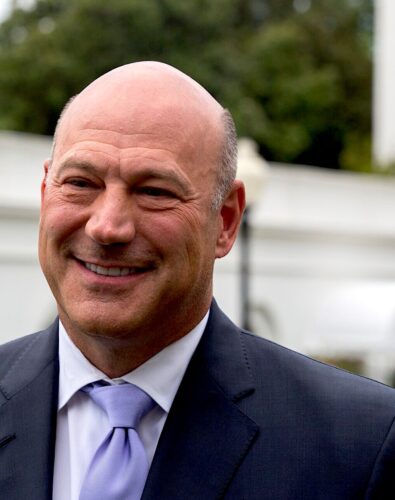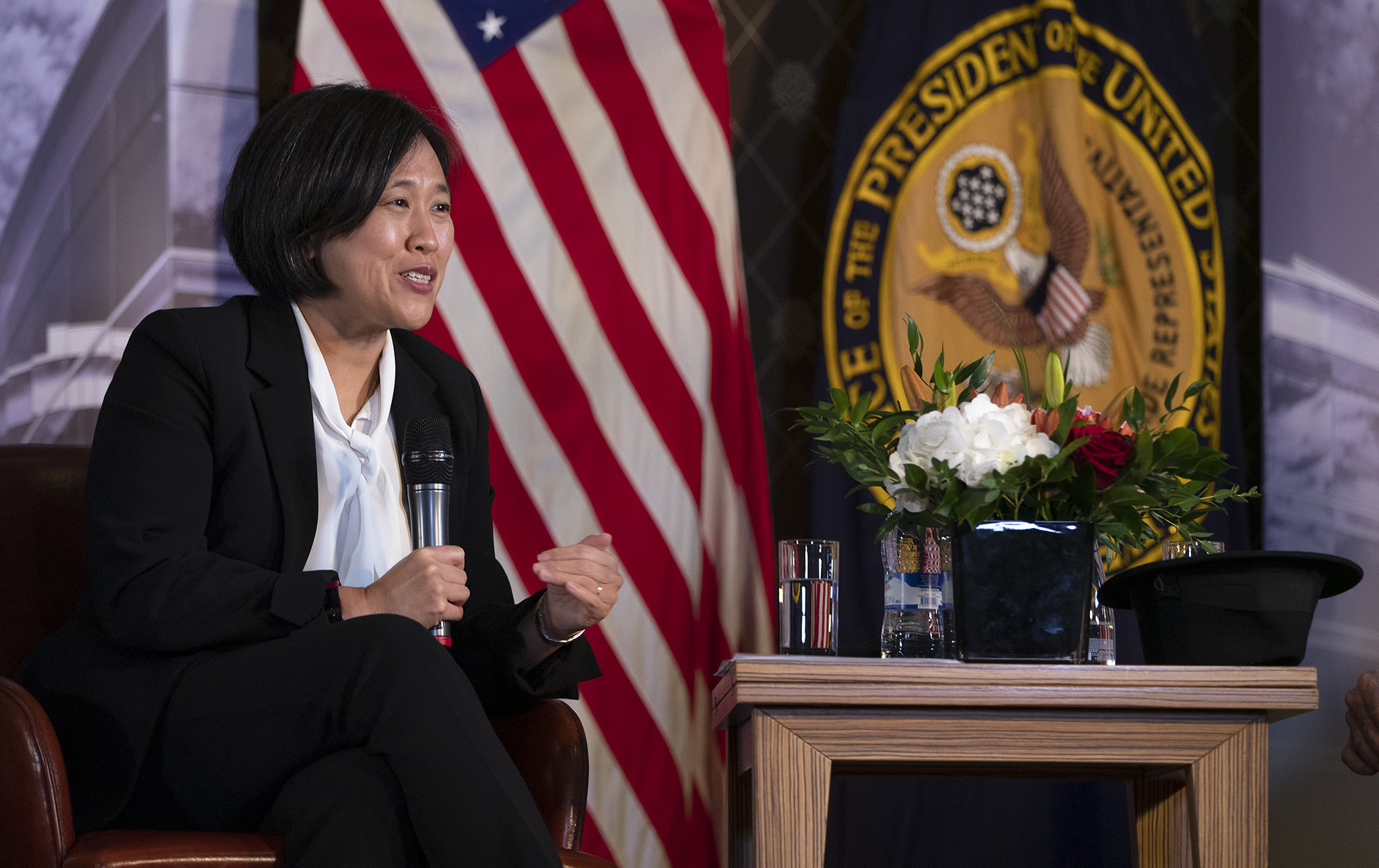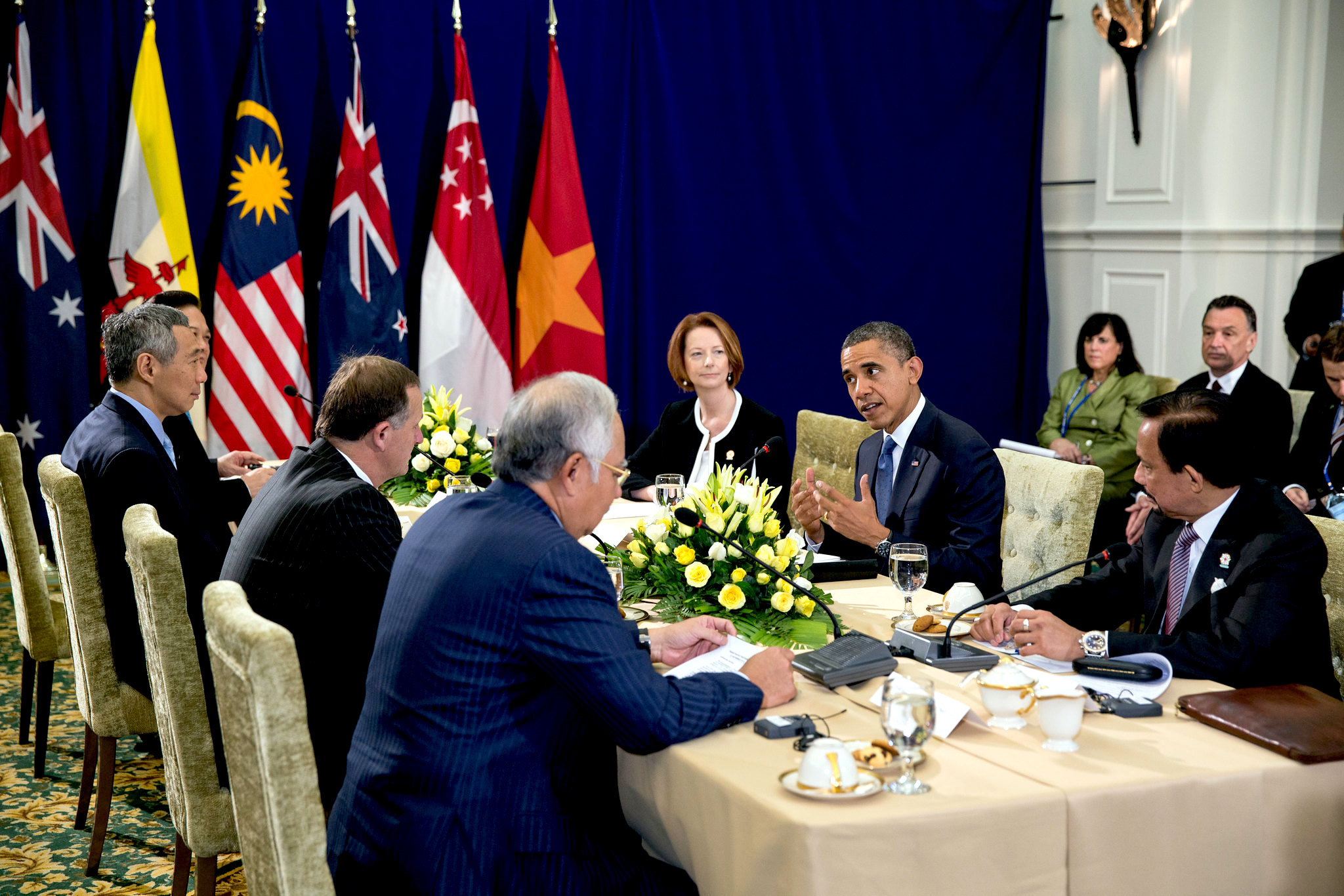With big powers clashing over trade policies, Jomo Kwame Sundaram and Anis Chowdhury say developing countries should remain “non-aligned.”

Former President Donald Trump, joined by other U.S. officials, receiving Chinese Vice Premier Liu He in Oval Office, January 2019. (White House, Tia Dufour )
By Jomo Kwame Sundaram and Anis Chowdhury
in Sydney and Kuala Lumpur
Inter Press Service

 Joining or ratifying dubious trade deals is supposed to offer miraculous solutions to recent lacklustre economic progress. Such naïve advocacy is misleading at best, and downright irresponsible, even reckless, at worst.
Joining or ratifying dubious trade deals is supposed to offer miraculous solutions to recent lacklustre economic progress. Such naïve advocacy is misleading at best, and downright irresponsible, even reckless, at worst.
U.S. President Barack Obama’s “pivot to Asia” after his 2012 re-election sought to check China’s sustained economic growth and technological progress. Its economic centrepiece was the Trans-Pacific Partnership (TPP).
But the U.S. International Trade Commission (ITC) doubted the Washington-based Peterson Institute for International Economics (PIIE) and other exaggerated claims of significant TPP economic benefits in mid-2016, well before U.S. President Donald Trump’s election.
The ITC report found projected TPP growth gains to be paltry over the long-term. Its finding was in line with the earlier 2014 findings of the Economic Research Service of the U.S. Department of Agriculture.
Meanwhile, many U.S. manufacturing jobs have been lost to corporations automating and relocating abroad. Worse, Trump’s rhetoric greatly transformed U.S. public discourse. Many Americans now blame globalization, immigration, foreigners and, increasingly, China for the problems they face.
Trump U-turn

Director of the National Economic Council Gary Cohn, July 2017. (White House, Evan Walker)
The TPP was believed to be dead and buried after Trump withdrew the U.S. from it immediately after his inauguration in January 2017. After all, most aspirants in the November 2016 election – including Hillary Clinton, once a TPP cheerleader – had opposed it in the presidential campaign.
Trump’s National Economic Council Director Gary Cohn has accused Trump presidential confidantes of “dirty tactics”’ to escalate the trade war with China.
Cohn said “he didn’t quit over the tariffs, per se, but rather because of the totally shady, ratfucking way Commerce Secretary Wilbur Ross and economic adviser Peter Navarro went about convincing the president to implement them.”
Cohn, previously Goldman Sachs president, insisted it “was a terrible idea that would only hurt the U.S., and not extract the concessions from Beijing Trump wanted, or do anything to shrink the trade deficit.”
But U.S. allies against China — the Japanese, Australian and Singapore governments — have tried to keep the TPP alive. First, they mooted ‘TPP11’ – without the U.S.
This was later rebranded the Comprehensive and Progressive TPP (CPTPP), with no new features to justify its “progressive” pretensions. Following its earlier support for the TPP, the PIIE has been the principal cheerleader for the CPTPP in the West.
Although U.S. President Joe Biden was loyal as vice president, he did not make any effort to revive Obama’s TPP initiative during his campaign, or since entering the White House. Apparently, re-joining the TPP is politically impossible in the U.S. today.
Panning the Trump approach, Biden’s U.S. trade representative has stressed, “Addressing the China challenge will require a comprehensive strategy and more systematic approach than the piecemeal approach of the recent past.” Now, instead of backing off from Trump’s belligerent approach, the U.S. will go all out.

U.S. Trade Ambassador Katherine Tai in October 2021. (U.S. Mission Geneva, Eric Bridiers)
Favoring Foreign Investors
Rather than promote trade, the TPP prioritized transnational corporation (TNC)-friendly rules. The CPTPP did not even eliminate the most onerous TPP provisions demanded by U.S. transnational corporations, but only suspended some, e.g., on intellectual property (IP). Suspension was favored to induce a future U.S. regime to re-join.
Onerous TPP provisions – e.g., for investor-state dispute settlement (ISDS) – remain. This extrajudicial system supersedes national laws and judiciaries, with secret rulings by private tribunals not bound by precedent or subject to appeal.
[Related: COP26: Emitters Sue To Chill Climate Measures]
Lawyers have been advising transnational corporations on how to sue host governments for resorting to extraordinary Covid-19 measures since 2020. Most countries can rarely afford to incur huge legal costs fighting powerful corporations, even if they win.
The Trump administration cited vulnerability to onerous ISDS provisions to justify U.S. withdrawal from the TPP. Now, citizens of smaller, weaker and poorer nations are being told to believe ISDS does not pose any real threat to them.
After ratifying the CPTPP, transnational corporations can sue governments for supposed loss of profits due to policy changes – even if in the national or public interest, e.g., to contain COVID-19 contagion, or ensure food security.
Thus, supposed CPTPP gains mainly come from expected additional foreign direct investment due to enhanced investor benefits – not more trade. This implies more host economy concessions, and hence, less net benefits for them.
Who Benefits?

President Barack Obama attends TPP meeting at ASEAN summit In Phnom Penh, Cambodia, Nov. 20, 2012. (White House, Pete Souza)
Those who have seriously studied the CPTPP agree it offers even fewer benefits than the TPP. After all, the main TPP attraction was access to the U.S. market, now no longer a CPTPP member. Thus, the CPTPP will mainly benefit Japanese corporate exports subject to lower tariffs.
Unsurprisingly, South Korea and Taiwan want to join so that their corporations do not lose out. China too wants to join, but presumably also to ensure the CPTPP is not used against it. However, the closest U.S. allies are expected to block China.
The Soviet Union sought to join NATO in the 1950s before convening the Warsaw Pact to counter it. Russian President Vladimir Putin also tried to join NATO years after Vaclav Havel, the last president of Czechoslovakia, ended the Warsaw Pact and Russian President Boris Yeltsin dissolved the Soviet Union in 1991.
Unlike Northeast Asian countries, Southeast Asian economies seek foreign direct investment. But when foreign investors are favored, domestic investors may relocate abroad, e.g., to “tax havens” within the CPTPP, often benefiting from special incentives for foreign investment, even if they are “roundtrip.”
Stay Non-Aligned
The “pivot to Asia” has become more explicitly military. As the new Cold War unfolds, foreign policy considerations – rather than serious expectations of significant economic benefits from the CPTPP – have become more important.
Trade protectionism in the North has grown since the 2008 global financial crisis. More recently, the pandemic has disrupted supply chains. With the new Cold War, the U.S., Japan and others are demanding their transnational corporations “onshore,” i.e., stop investing in and outsourcing to China, which also hurts trans-border suppliers.
Hence, net gains from joining the CPTPP — or from ratifying it for those who signed up in 2018 — are dubious for most, especially with its paltry benefits. After all, trade liberalization only benefits everyone when “winners” compensate “losers” – which CPTPP requirements do not.
With big powers clashing in the new Cold War, developing countries should remain “non-aligned” – albeit as appropriate for these new times. They should not take sides between the dominant West and its adversaries – led by China, which is the major trading partner, by far, for more and more countries.
Jomo Kwame Sundaram, a former economics professor, was United Nations assistant secretary-general for economic development, and received the Wassily Leontief Prize for Advancing the Frontiers of Economic Thought in 2007.
Anis Chowdhury is adjunct professor at Western Sydney University and the University of New South Wales (Australia). He has held senior United Nations positions in New York and Bangkok.
This article is from Inter Press Service
The views expressed are solely those of the authors and may or may not reflect those of Consortium News.

The trend is now “more explicitly military”. Historically trade rivalry, ultimately for dominance, leads major economic powers into war. That is certainly the direction the Sino-American confrontation is going. It will be a world war. But humanity has not been able to fight world wars since the dawn of the atomic age.
If interested in reading more on why we seem set for self-destruction, search:
A free ebook: The Pattern Of History and Fate of Humanity
China is a developing country with a PPP-GDP greater by about 30% than that of the US.
But its per capita PPP-GDP is about 1/4 of the US. That means it is a developing country and shares a common need to grow with other developing country.
It has emerged de facto as the leader of the Global South which has flocked to it despite US blandishments (usually highly questionable) and threats. Perhaps the best expression of this alignment is BRICS – and in that the “R” stands out, Russia, a country in need of more development BUT one that was once a part of the West.
No longer.
After leaning to the East and to the Global South, Russia has turned its back decisively on the West and pivoted, if you will, decisively to the Global South.
It is in this grouping that the developing countries of the world belong.
Non-alignment was great in the 1960s but now it is a thing of the past. China is rising and the Global South is rising with it.
The time for non-alignment is past; this is a time for realignment.
And this article seems like a not so subtle plea to those countries fed up with the West and US hegemony to stay away from this new alignment now represented by BRICS+.
Sad.
True free trade deals are fine. Sorta. The US doesn’t propose or comply with them anyway. The US has taken to using trade as a weapon and history says that never works. Donnie Murdo’s easy-to-win trade war with China cost the US a fortune and a ton of jobs. If the US decides to go all in with a trade war, look out. The US does not have a robust economy to take the losses. The loss of sovereignty made plain by the very first lawsuit brought by a corporation under CPTPP will be the end of it.
“After all, most aspirants in the November 2016 election – including Hillary Clinton, once a TPP cheerleader – had opposed it in the presidential campaign.
This is not quite accurate. HRC changed her rhetoric. What she actually said is that she didn’t support it the way it is currently written. In other words, if elected she intended to redefine the meaning of “is” and then continue to push for the passage of the agreement.
If you’re not old enough to understand the reference to “is”, you’ll need to go back to the Lewinsky congressional hearings. During the hearing, Bill responded to a question by replying, “It depends on what the meaning of the word ‘is’ is. . .”
“Panning the Trump approach, Biden’s U.S. trade representative has stressed, “Addressing the China challenge will require a comprehensive strategy and more systematic approach than the piecemeal approach of the recent past. Now, instead of backing off from Trump’s belligerent approach, the U.S. will go all out.” (Jomo Kwame & Anis Chowdhury)
“As the EAGLE got more and more threatening, the BEAR and the DRAGON got closer and closer in their strategic partnership. Now both BEAR and DRAGON have too many strategic links across the planet to be intimidated by the EAGLE’S massive Empire of Bases or those periodic coalitions of the (somewhat reluctant) willing.” (Pepe Escobar)
It’s NOT pretty!!! Just “yesterday,” The House of Fraud met The House of Saud. Advantage, Saudi Arabia, UAE, Iran, Israel, Russia, China.
POTUS was tasked w/getting the Saudis & The UAE on board the NO Reverse. NO Brakes, “Go Fund Me Train” to the US/NATO vs. Russia, war, in Ukraine. POTUS was an “ULTRA” Failure, i.e., “Uncle Joe, Blew It!” Talk about a “s t r e t c h” assignment! Dictators locking arms w/The White House, to justify the war, in Ukraine. POTUS’ war for Democracy. Human Rights. Liberty; AND, to $anction Russia.
The House of Suad’s response, “No, thank$!!!” To the “war/conflict” in Ukraine AND/OR signing on to the US/NATO sanctions on Russia. “Saudi Arabia has AGREED to deals with both China and Russia. EGYPT, has extensive agreements w/Russia (i.e., started constructing a $25 BILLION nuclear reactor). QATAR has close economic relations with IRAN.”
Consequently, POTUS “Flys Home” Biden, empty-handed, i.e., “A calabash w/holes cannot be filled!”
AND, CHINA has been expanding “economic and political influence in the energy-rich Middle East. BEIJING has become the region’s largest trading and investment partner, outstripping both the US and Europe some YEARS ago.”
“According to the American Enterprise Institute, the last SIXTEEN (16) YEARS has seen total Chinese investments and construction projects reached 1) $43.47 Billion in SAUDI ARABIA, 2) $36.16 Billion in the United Arab Emirates (UAE), 3) $30.05 Billion in IRAQ, 4) $11.75 Billion in KUWAIT, 5) $7.8 Billion in QATAR, 6) $6.62 Billion in OMAN; and, 7) $1.42 BIllion in BAHRAIN.”
Russia and China “R I S I N G.” Et tu, BIDEN?
“He who ties the bell around the tiger, must untie it!!!”